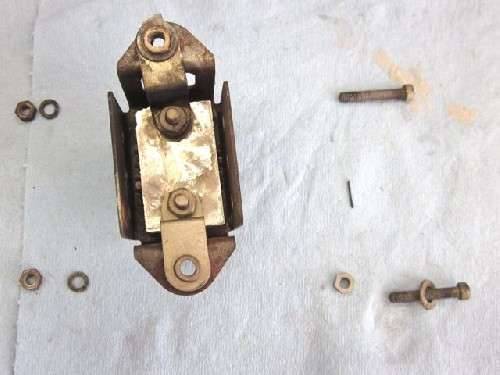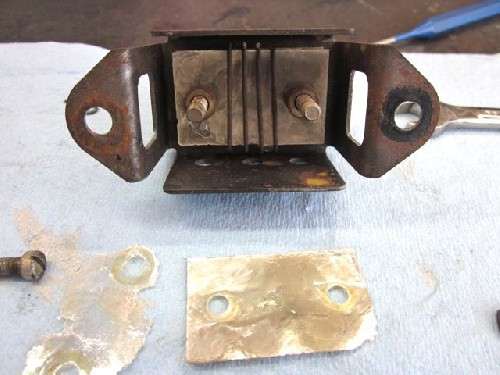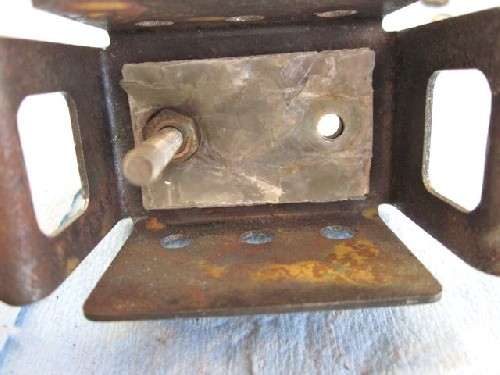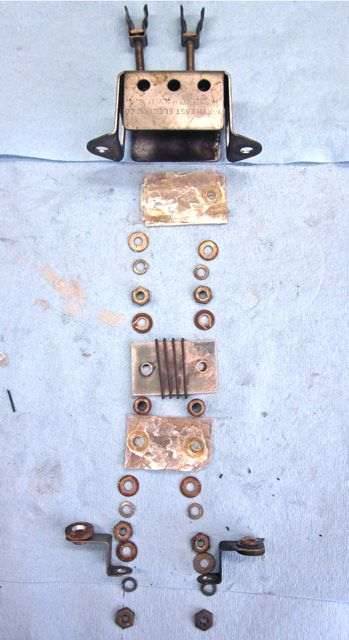|
Re: 1930 (and many other years) fuse block
|
||||
|---|---|---|---|---|
|
Forum Ambassador
|
Mica is a mineral that was used before phenolic or epoxy resin boards were available. It is also able to sustain high temperature and was commonly used in early toasters to support the heating element which was wrapped around it. As you found, it is somewhat brittle but as long as the layers are not broken and are still able to be supported, the thickness is not that important as long as what is left is able to support the wire.
It is still available. Do a search for mica sheet or sheet mica. Here is onevirtualvillage.com/001493-012.html?utm_source=googlebase&utm_medium=shcomp
Posted on: 2010/10/3 12:45
|
|||
|
||||
|
Re: 1930 (and many other years) fuse block
|
||||
|---|---|---|---|---|
|
Home away from home
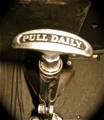
|
Thanks for the link. I did a search on google and saw the virtual village link and figured it was some sort of online forum for city folks desiring a village experience, or something...
Any idea why there would be three layers? The top and bottom layers are not supporting wires. Thanks again. Tom
Posted on: 2010/10/3 13:10
|
|||
|
||||
|
Re: 1930 (and many other years) fuse block
|
||||
|---|---|---|---|---|
|
Forum Ambassador
|
Insulation, most likely. Not sure what or how close the wire is to anything else but if it heated or vibrated to touch something, the extra layer would prevent it or protect something from burning.
Posted on: 2010/10/3 13:13
|
|||
|
||||
|
Re: 1930 (and many other years) fuse block
|
||||
|---|---|---|---|---|
|
Home away from home
|
Tom,
The mica sheets are primarily for support of the wire that is wrapped around them. At the time mica was one of the only materials that would stand up to the heat. As you know this fuse block has a glass fuse in parallel with the wire wrapped around the mica. If there was a short in the system the fuse would blow and the wire wrapped around the mica would get red hot. The glass fuse would open but the wire wrapped around the mica would still permit current flow, so the engine wouldn't stop, unless the short was in the ignition system. Since the resistance of the wire wrapped around the mica increases greatly when it gets hot, the current flow from the generator to ground would actually decrease, protecting the generator from burning itself up. Pretty smart, those Packard Engineers...... Regards, Dave
Posted on: 2010/10/3 15:12
|
|||
|
||||
|
Re: 1930 (and many other years) fuse block
|
||||
|---|---|---|---|---|
|
Home away from home
|
Tom,
I almost forgot.... If you need mica sheet material try: mcmaster.com/#mica-sheets/=949qpa Regards, Dave
Posted on: 2010/10/3 15:15
|
|||
|
||||
|
Re: 1930 (and many other years) fuse block
|
||||
|---|---|---|---|---|
|
Home away from home

|
Dave,
I agree those folks were pretty smart. I appreciate the link the the McMaster source for mica sheets. One other interesting discovery: the nuts, washers, and lock washers that supported the mica sheets were all copper plated steel. Since this was a North East unit, I am guessing they had an easier time copper plating nuts and washer than getting brass. To reduce corrosion, I am going with brass. Guess I'm a 'rodder after all  . .Tom
Posted on: 2010/10/3 19:49
|
|||
|
||||

 (36.39 KB)
(36.39 KB)